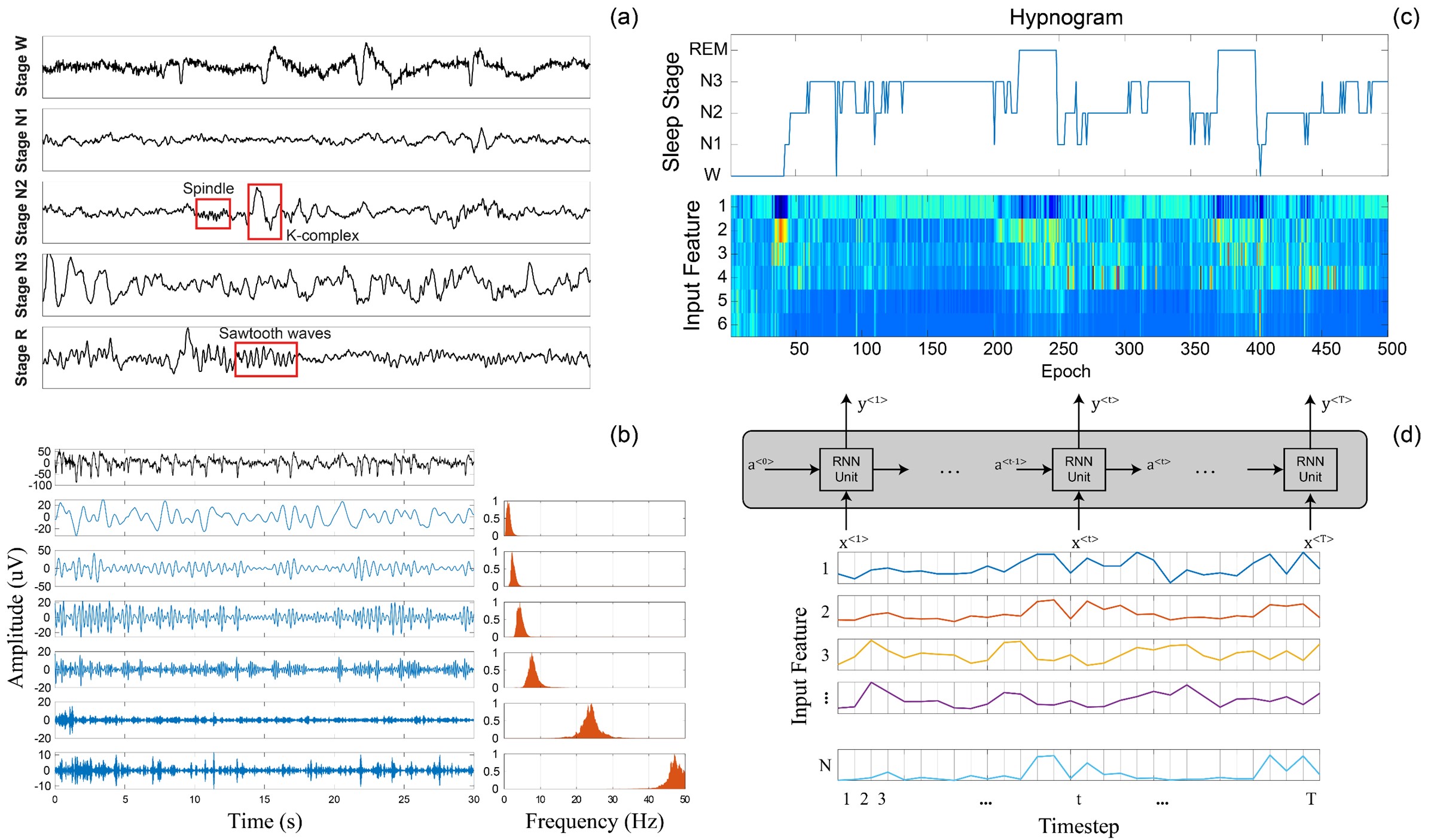
Topic:
Sleep quality can be compromised by sleep-related disorders such as sleep apnea, depression, insomnia or narcolepsy and the chronic restriction has negative consequences both on the health of individual and on public security. The development of new technologies in the field of neuroscience has allowed a more detailed study on the mechanisms that regulate human sleep. The process of falling asleep cannot be considered as an abrupt transition from wakefulness to sleep but refers to various sleep stages that occur and repeat in relatively regular cycles. (a) The guidelines proposed by the American Academy of Sleep Medicine (AASM) classified electroencephalographic (EEG) signals into five stages: wakefulness (stage W), three types of non-rapid eye movement (NREM) sleep (i.e. N1, N2 and N3) and rapid eye movement (REM) sleep. Sleep scoring is time-consuming, often tedious and suffers from intra- and inter-operator variability; hence automatic sleep stage classification (ASSC) systems have been proposed to support clinicians. (b-c) Signal decomposition techniques can be useful approaches to highlight hidden patterns or rhythms in non-stationary biological signals. Several input features which contain quantitative information and relevant patterns for sleep analysis are extracted from EEG sub-signals with different frequency content. In recent years, with the advent of deep learning, new classification algorithms have been proposed with the aim of simulating human like decision making. (d) Recurrent neural networks (RNNs) are powerful deep learning models especially used for their capability of handling time series as digital signals and interpreting long-range structural dependencies.